TO THE MEMORY OF
DONALD EASTEN
19182017


NESTS
SUSAN OGILVY

NOTE
In the making of this collection, great care has been taken not to disturb nesting birds. All the nests were either old and abandoned, or else new but displaced by strong winds or predators. It was once considered perfectly acceptable to gather birds eggs indeed many amateur naturalists had such collections. But it became apparent that some bird populations were in decline, partly as a result of this hobby, and in 1981 the Wildlife and Countryside Act made it a crime to collect wild birds eggs and to disturb nesting birds. It is nowadays unthinkable for any bird lover to violate the nests of these remarkable creatures.
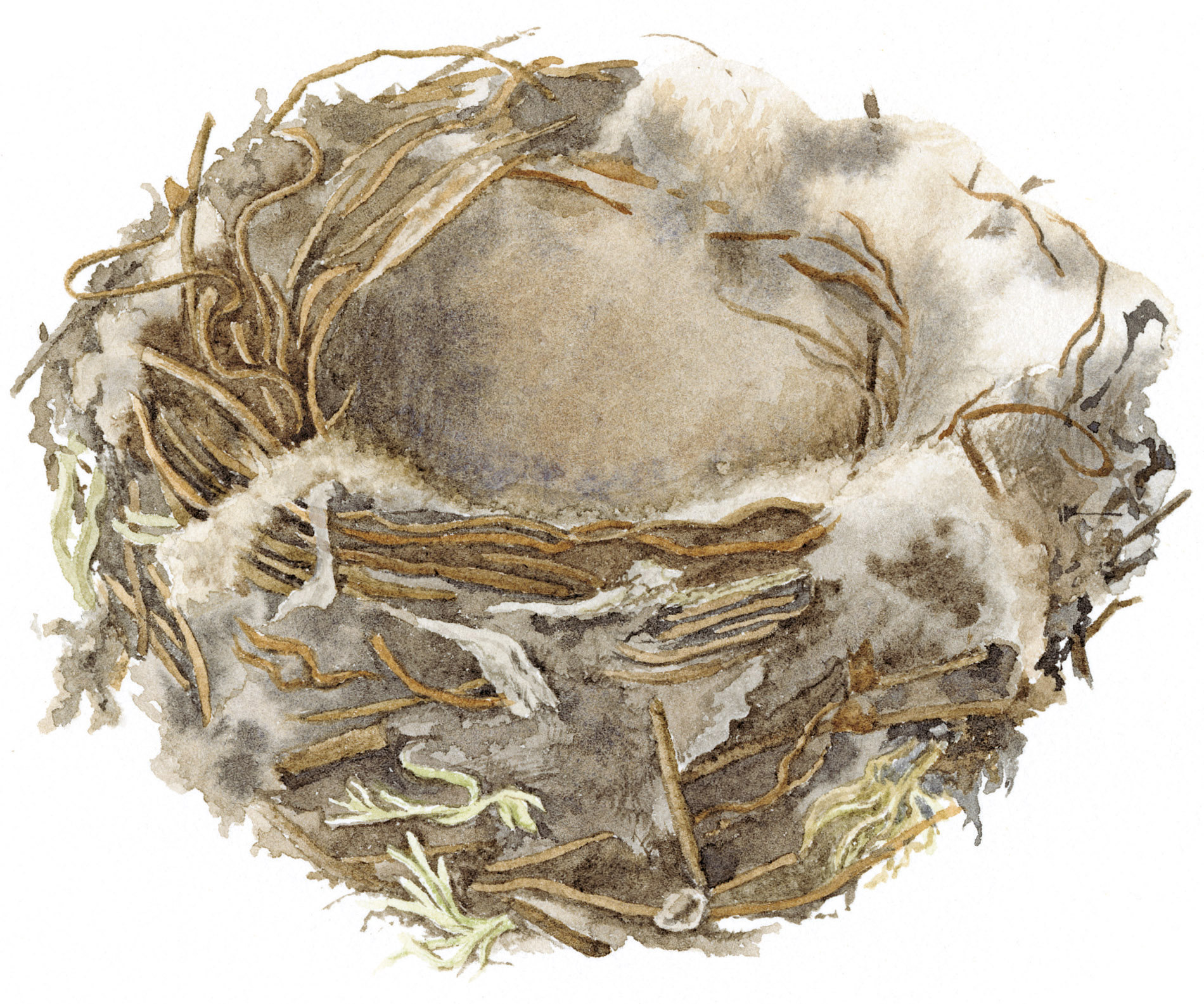
Goldcrest
Regulus regulusOne day, while clearing up the garden after a storm, I found a chaffinch nest it was a strange, sodden lump lying on the grass under a fir tree, and I wasnt even sure what it was. I brought it inside, placed it on a newspaper and over the next few hours, as the weight of water drained out of it, the sodden lump blossomed into a jewel-like nest, reminding me of the wonder of those tiny Japanese paper flowers that emerged from shells placed in water, which had enchanted me as a child. The nest was clearly very new and unfinished, as the lining of feathers was sparse and the moss was fresh. I was enthralled, and dropped everything to paint it.
This was the start of a fascination with nests. Until I found this perfect object, Id not realized how diverse nest building is, nor the skill with which they are built. Each species has its own method, favouring certain materials twigs, roots, grasses, leaves, moss, lichen, hair, feathers and cobwebs that reflect its habitat. The reed bunting, for instance, lines its nest with the fluff of pulled-apart reed mace, while the blue tit nest that I found on the Isle of Arran includes deer hair an abundant material on the island. Some birds incorporate what we humans might call rubbish, and the best example I know is that of a friend whose father came in from the garden, when she was a child, carrying a nest that contained one of her name tapes.
As a botanical illustrator I have made a point of only ever painting from life, never from photographs, or even my own notes. So the collection here is entirely due to chance, initially depending upon any abandoned nests I came across in the garden or on walks. But gradually, as I progressed, word got out that I was painting nests, and family and friends brought me finds of their own. I was able to learn a good deal through my own observations, but as my fascination with nests grew, I wanted to learn much more about them. I came up against a surprising lack of books about nest building, however, and could find no modern works specifically on the subject of British and European birds nests. My father was a lifelong lover of birds, and among his old books I found Charles A. Halls Birds Eggs and Nests, published in 1932, which he had received as a birthday present when he was fourteen, and this seemed to be the last word. My eldest son later gave me British Birds Nests by Richard Kearton, dating from 1895. By this time I had painted about ten nests, and it was dawning on me that eyes need to be opened to these wonderful works of avian architecture perhaps I might even produce a book of my own?
At about this stage in the project a friend introduced me to Deon Warner. Deon has for many years carried out the British Trust for Ornithology surveys in the part of Somerset where we both live, and spends hours of every day walking and watching. He embraced my project with great enthusiasm and kindness and over the next few years brought me many nests usually ones he had spotted and watched through the summers and collected once the nesting season was over and the nests had been abandoned. He has a vast knowledge on all wildlife, and I could not have sat at the feet of anyone better. Deons tall, rangy, white-haired figure must be known for miles around as he walks the county, sometimes pausing to listen to birdsong. Once I had painted a batch of nests Id take them back to Deon, show him the paintings and then sit in his sitting room which looks like a branch of the Natural History Museum and learn. When the Covid pandemic arrived and such visits were forbidden, we would stand outside one or other house and continue the conversation. This book would have been almost impossible without him, and I am for ever grateful for his friendship and his teaching.
My exploration of nests has been limited by serendipity, but it has also been limited by scale, as I prefer to obey the rules of botanical illustration and paint to life-size. As the idea of a book took hold, it became a necessity that the nests should fit on the page of a reasonably sized volume. (Actually, a couple of nests extend beyond the edge of the page, but the bowl of those nests is within the margins.) This restriction has meant that Ive concentrated on the passerines, the common garden birds throughout Britain and much of Europe, Scandinavia and as far afield as Russia, Turkey and North Africa. Some of these are resident; others are migrants who come to Britain to breed but spend their winters in warmer climes.
The Passeriformes are the largest order of birds, with more than five thousand species, represented on all continents except Antarctica. They are perching birds, having feet with three forward-facing toes and one backward-facing, which enables them to grasp twigs and branches. Within this order are the Oscines the songbirds. Passerines are generally more active by day, roosting at night. Their chicks hatch at an early stage in their development, when they are frail, naked and need much parental care. This informs the parent birds nest design, as protection from both the weather and predators is required. Non-passerines such as ducks, geese and swans make their nests on the ground as their young hatch at a more advanced stage of development and are more able to fend for themselves.
Nests can largely be divided into four types: the cup, the dome, the scrape and the burrow or cavity. Most passerines use the architecture of the cup or dome exceptions include nightjars and skylarks, which nest in shallow depressions on the ground such as the prints left by cows hoofs, or in tufts of grass, and woodpeckers, which nest in holes in tree trunks. The shape of each species nest is determined by its habitat and the needs of its young. An abundance of predators will mean that good camouflage is required; strong prevailing winds will perhaps dictate the need for a domed nest; the instinctive urge for a bird to build in caves may be satisfied by building within barns or the eaves of roofs.
Cup-shaped nests vary in depth, but are perfectly suited to the needs of both the eggs and the nestlings. The eggs are held together in a cluster by the bowl of the cup so that the incubating adult can cover them all efficiently. When the eggs hatch, the naked, blind nestlings are held together for mutual warmth, and the depth of the cup means they are less likely to fall from the nest (although when this does happen the adult birds will usually continue to care for the chick on the ground). Domed nests provide even better shelter for the nestlings. The long-tailed tits pear-shaped nest is much admired for this facility. Made largely of moss and cobwebs, with a side entrance hole near the top, the tensile strength of the cobwebs means that the bag is elastic and can expand as the chicks grow.
Next page
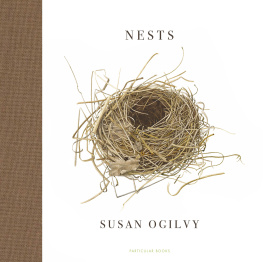


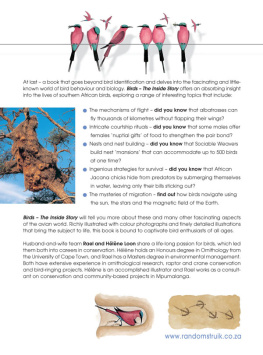
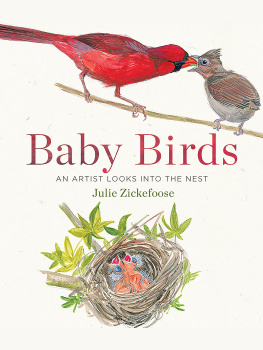


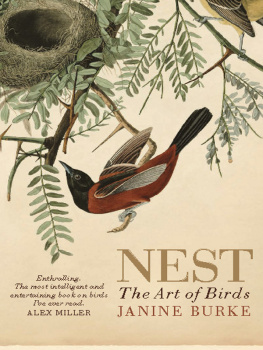



 Goldcrest Regulus regulus
Goldcrest Regulus regulus